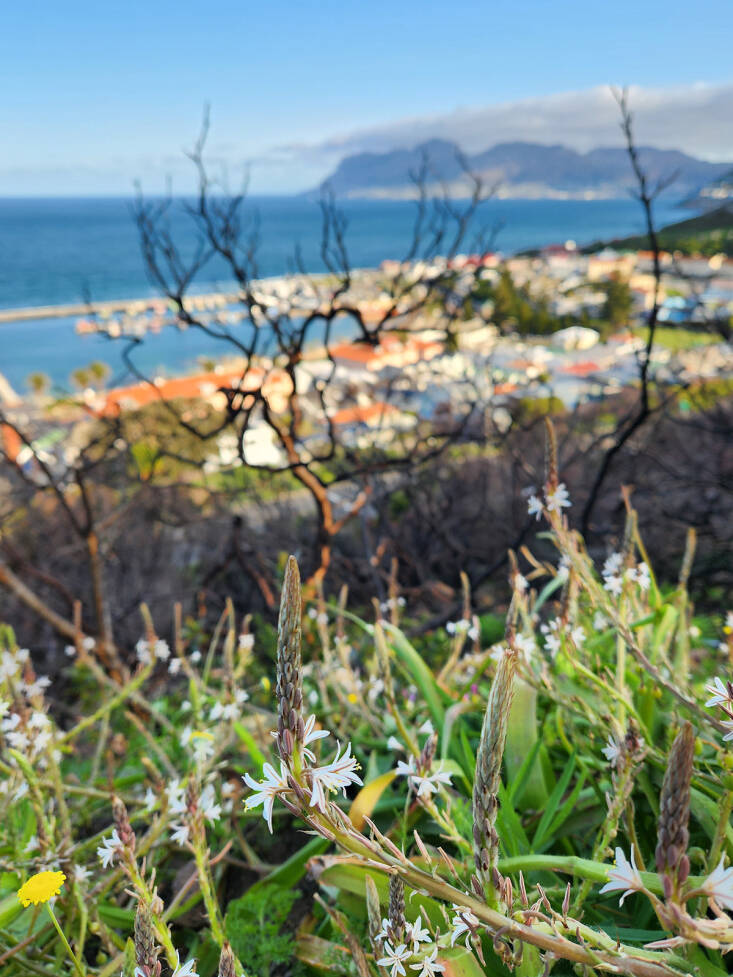There are many reasons to visit Cape Town at South Africa’s southern tip in spring. It’s a so-called shoulder season, so there is no crush of summer visitors. Flights are less expensive. And flowers: One of the most awe-inspiring floral displays in the world unfolds along and adjacent to the South African region of the West Coast in the Western Cape and Northern Cape provinces, from late winter through September. For a forager, there is one more incentive to travel: Veldkool (pr. FELT-khoowill). This native vegetable is the flower bud of several species of Trachyandra, a strappy-leafed geophyte that grows in sandy soil along beaches, in the veld, along roadside verges, and in a few enterprising urban gardens.
Join me on a culinary foray along the edges of a Capetonian spring.
Photography by Marie Viljoen.
Veldkool’s unopened buds are reminiscent of asparagus and are sometimes called wild asparagus, which is no more accurate botanically than the more common Afrikaans name, which translates as field or meadow cabbage. The buds’ tender season spans several weeks, as different species of Trachyandra bloom. These unobtrusive, resilient plants have every potential to become a cultivated seasonal crop in South Africa’s winter rainfall regions, even as their natural populations succumb to development.

On a recent visit to Cape Town, my first glimpse of veldkool was within spray-splash of the sea on a walkway that connects the communities of Muizenberg and Kalk Bay along the False Bay coast. Squeezed between railway tracks and the kelp-fringed blue water, remnants of coastal vegetation persist in the rocky and sandy shoreline, beside a path that skirts tidal pools and rock pools brimming with sea urchins and anemones, benches where people sit looking out to sea, and rocks where red-beaked African oyster catchers patrol exposed mussel banks for dinner. It is scenic. Among blankets of semi-succulent dune spinach (Tetragonia decumbens), the slender buds of Trachyandra ciliata, historically called slaaikool (salad cabbage) had just begun to bloom. Dark-bodied Cape honeybees buzzed the scented flowers.

Two weeks later and a few hundred feet higher, this veldkool species was blooming profusely above the bay, in sooty sand. Above its lush leaves stood the charred skeletons of burned pincushion proteas. Two fires swept these slopes last January and February. Now, after the wettest winter on record, green life is surging. While the fires can be devastating to humans, the fynbos biome—like California’s chaparral—evolved to burn, and its vegetation depends and thrives on it.


The other useful veldkool growing locally is T. divaricata. I think of it as smooth veldkool, because its stout stems are glossy, but it is known as sandkool—apt because it thrives in the deep sand of dunes, although it can also emerge improbably from rocky recesses where just enough grit has accumulated to sustain the plants.






